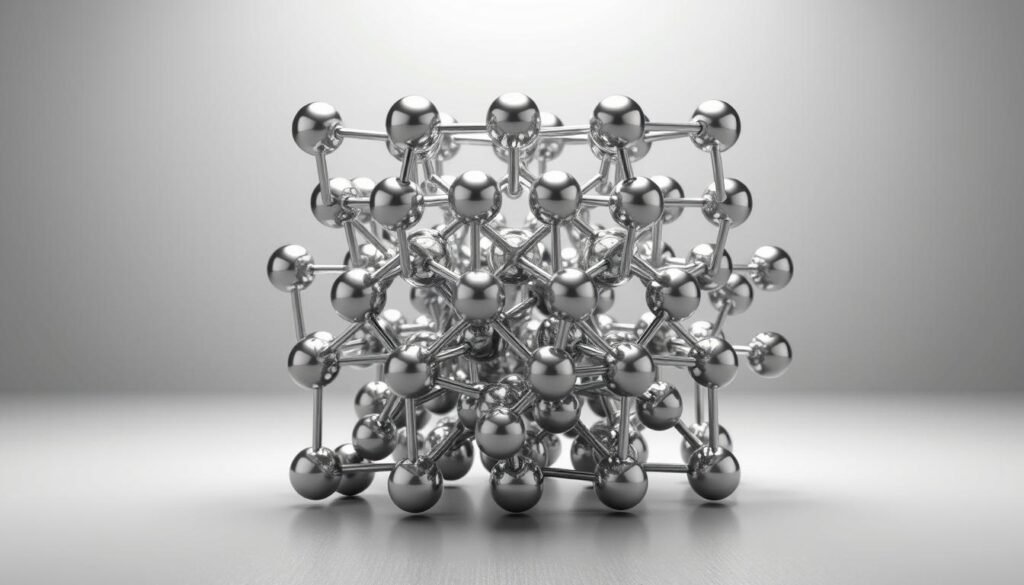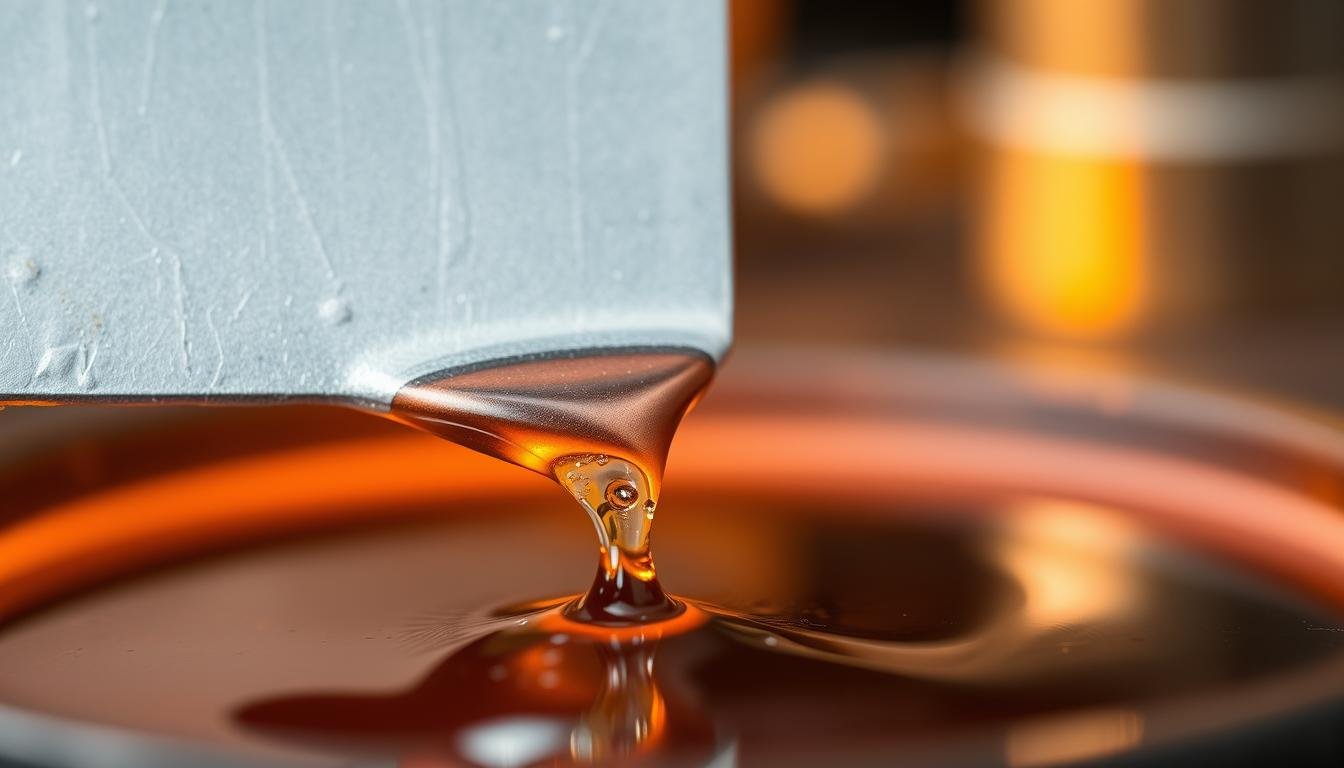Tin, a versatile metal, plays a critical role in modern manufacturing due to its unique physical properties. One of its most notable characteristics is its transition from solid to liquid at 231.93°C (449.47°F). This specific temperature threshold enables practical applications across industries, from electronics to food packaging.
At the atomic level, heat energy disrupts tin’s orderly crystal structure. Individual atoms gain enough motion to break bonds, creating a disordered liquid state. This behavior explains why the material flows easily when heated, making it ideal for soldering and alloy production.
Industries value tin’s relatively low thermal requirements compared to other metals. For example, its use in circuit board soldering relies on precise temperature control to avoid damaging sensitive components. Similarly, food-safe coatings leverage this property for efficient production processes.
Understanding these scientific principles helps engineers optimize material performance. Variations like nanoparticle tin (11 nm particles) melt at just 177.3°C, showcasing how structure impacts thermal behavior. Such insights drive innovation in sectors requiring customized material solutions.
This guide explores why tin’s phase-change properties matter in real-world scenarios. We’ll analyze its atomic dynamics, industrial advantages, and emerging applications that depend on controlled heating processes.
Overview of Tin and Its Unique Properties
As one of the earliest metals used by humans, Sn (stannum) has left an indelible mark on technological progress. This silvery-white element combines malleability with exceptional corrosion resistance, making it invaluable for protective coatings and alloy production.
An Introduction to Tin as a Metal
With a relatively low density among industrial metals, Sn facilitates lightweight yet durable components in electronics. Its conductivity properties ensure efficient energy transfer. Natural oxidation resistance extends product lifespans in harsh environments.
Historical and Modern Uses
Early civilizations revolutionized tool-making by alloying copper with this element to create bronze. Medieval artisans shaped pewter containers using its pliable nature. Today, manufacturers rely on Sn-based solders for precision electronics.
| Era | Application | Significance |
|---|---|---|
| Bronze Age | Bronze Alloys | Durable tools & weapons |
| Medieval | Pewter Crafting | Household items & art |
| Modern | Food Packaging | Corrosion-resistant cans |
These applications highlight how Sn’s properties solve engineering challenges across eras. From ancient metallurgy to smart device production, this metal continues shaping technological progress.
Understanding the Melt Point of Tin
The transition from solid to liquid defines a material’s thermal behavior in practical applications. For elemental tin, this occurs at 232°C (448°F) – a precise threshold where atomic bonds yield to heat energy. This property determines how industries handle and process the metal.
What Does Melt Point Mean?
Melting temperature marks the exact heat level needed to break a solid’s crystalline structure. In tin, atoms arrange in geometric patterns until thermal agitation causes them to flow freely. This phase change enables techniques like soldering without damaging adjacent materials.
Three factors influence this process:
- Atomic bond strength between particles
- Energy transfer efficiency during heating
- Material purity and crystalline defects
Significance of Tin’s Low Melting Point
Compared to metals like iron or copper, tin requires significantly less energy to reach liquid state. This allows manufacturers to use standard equipment rather than industrial furnaces. Factories save costs while maintaining precise control over production parameters.
The melting temperature of tin makes it ideal for delicate electronics assembly. Circuit boards withstand brief exposure to 232°C, ensuring components remain intact during soldering. Food can coatings similarly benefit from rapid, energy-efficient application processes.
This thermal characteristic also supports recycling initiatives. Lower heat requirements reduce carbon emissions during material recovery – a critical advantage in sustainable manufacturing.
Tin’s Physical and Chemical Characteristics

At the core of tin’s industrial value lies its unique molecular architecture. This silvery metal adapts to environmental conditions through structural shifts and protective reactions, making it indispensable for specialized applications.
Crystal Structure and Composition
Tin exists in two primary forms: brittle gray α-tin below 13.2°C and malleable white β-tin at room temperature. The β-phase features a tetragonal lattice that enables both flexibility and durability. This atomic arrangement explains why pure tin resists cracking under stress better than many metals.
| Allotrope | Stability Range | Key Property |
|---|---|---|
| Alpha (α) | Below 13.2°C | Brittle, powdery form |
| Beta (β) | 13.2°C – 232°C | Malleable metallic state |
Oxidation and Surface Behavior
When exposed to air, tin develops a microscopically thin oxide layer – about 3 nanometers thick. This barrier stops further corrosion without flaking off.
“The self-limiting oxidation process makes tin coatings eternally renewable,”
notes Dr. Elena Torres, a materials scientist at MIT.
Industrial applications leverage this trait through controlled oxidation conditions:
- Food can linings resist acidic contents
- Electroplated surfaces prevent copper erosion
- Alloy additives inhibit rust in steel
Impurities like lead or bismuth disrupt these natural properties, which is why 99.9% pure tin dominates precision manufacturing. Understanding these chemical behaviors allows engineers to design more resilient products.
Factors Influencing Melting Temperature
Multiple variables determine how tin transitions from solid to liquid states during industrial processes. Understanding these elements helps manufacturers optimize energy use and product quality.
Heat Delivery Methods and Surroundings
Different heating systems create distinct thermal patterns. Gas flames offer rapid temperature spikes but struggle with precision. Electric coils provide steady heat distribution, while induction methods enable localized control.
| Heat Source | Speed | Accuracy |
|---|---|---|
| Gas Flame | Fast | Low |
| Electric Element | Moderate | High |
| Induction | Variable | Extreme |
Ambient conditions like humidity rarely affect standard operations. However, high-altitude facilities might see slight shifts in melting behavior due to air pressure changes.
Material Blends and Contaminants
Adding metals like lead or silver alters thermal thresholds. A 60/40 tin-lead alloy melts at 188°C – 44°C lower than pure tin. Conversely, copper impurities can raise required temperatures by 5-7%.
Dr. Rachel Nguyen, a metallurgist at Stanford, explains:
“Even 0.5% contamination disrupts phase transitions. Precision alloys demand 99.99% purity for predictable results.”
Three critical purity considerations:
- Recycled materials often contain mixed residues
- Oxide layers influence heat absorption rates
- Rapid heating causes uneven molecular expansion
Applications in Industry and Electronics
Modern manufacturing thrives on materials that balance performance with practicality. Tin’s thermal and chemical properties make it indispensable across diverse sectors, particularly in electronics and metalworking. Below we explore its most impactful uses.
Soldering and Metal Plating
Circuit board production relies heavily on tin-based solder alloys. The 50-50 tin-lead blend melts at 215°C – ideal for creating durable connections without overheating sensitive components. Lead-free alternatives now dominate consumer electronics, meeting strict environmental standards.
Plating processes use electrolytic deposition to coat metals like steel and copper. This creates corrosion-resistant surfaces for food cans and electrical connectors. Automotive manufacturers apply these coatings to battery terminals, ensuring reliable power transfer in harsh conditions.
| Alloy Type | Composition | Melting Range |
|---|---|---|
| Traditional Solder | 50% Sn, 50% Pb | 183-215°C |
| Lead-Free Solder | 96.5% Sn, 3% Ag, 0.5% Cu | 217-220°C |
| Plating Solution | 99% Sn + Additives | Liquid at 25°C |
Use in Copper Alloys and Bronze Components
Combining tin with copper produces bronze – a material revolution dating back 5,000 years. Modern versions contain 12-20% tin, enhancing strength for marine hardware and musical instruments. These alloys withstand saltwater corrosion better than pure copper.
Aerospace engineers select tin-copper blends for landing gear components. The metals’ combined durability reduces wear under extreme pressure. As Dr. Michael Chen of Boeing notes:
“Tin’s friction-modifying properties make bronze bearings essential in aircraft control systems.”
Comparisons with Other Metals and Alloys
Material engineers frequently evaluate thermal properties when selecting metals for industrial use. Understanding how tin’s phase-change behavior stacks against alternatives reveals why it dominates specific applications.
Melting Points Across Common Metals
Metals vary widely in their thermal thresholds. While steel requires over 1400°C to liquefy, tin transitions at just 232°C. This places it among the most energy-efficient options for low-heat processes.
| Metal | Melting Temperature | Relative Energy Use |
|---|---|---|
| Aluminum | 660°C | 2.8x Higher |
| Copper | 1084°C | 4.7x Higher |
| Lead | 327.5°C | 1.4x Higher |
| Silver | 961°C | 4.1x Higher |
Lead’s 327.5°C threshold made it a natural partner for tin in traditional solders. However, environmental regulations now favor tin-silver-copper blends that melt near 220°C – still far below most industrial metals.
Advantages of Tin Over High-Melting Materials
Lower melting metals like tin enable precise manufacturing without compromising surrounding components. Electronics assembly benefits particularly, as circuit boards withstand brief 232°C exposure.
Dr. Helena Carter, a Stanford metallurgist, explains:
“Using tin alloys cuts energy costs by 60% compared to copper-based systems. This thermal efficiency directly impacts production scalability.”
Three key benefits drive tin’s industrial preference:
- Reduced equipment wear from lower operating temperatures
- Faster production cycles due to rapid heating/cooling
- Compatibility with heat-sensitive substrates like plastics
These factors make tin indispensable for applications requiring precision and energy conservation. From food can coatings to smartphone circuitry, its thermal profile delivers unmatched versatility.
Conclusion
The unique thermal behavior of tin solidifies its role as a cornerstone of modern manufacturing. With a phase transition at 232°C (450°F), this metal enables energy-efficient processes across industries. Its low melting temperature remains unmatched among practical metals, driving innovations from microelectronics to sustainable packaging.
Soldering technology thrives on tin’s ability to form reliable bonds without damaging delicate components. Food-safe coatings leverage this property for rapid, cost-effective production. Even medical devices benefit from precision alloys tailored to specific thermal thresholds.
Future advancements will likely refine tin-based materials for greener technologies. Researchers are optimizing compositions to balance performance with environmental needs. As industries prioritize efficiency, tin’s adaptable nature ensures its continued relevance in evolving applications.
From circuit boards to canned goods, this metal’s thermal profile solves critical engineering challenges. Understanding its properties empowers professionals to push boundaries in material science and manufacturing excellence.
